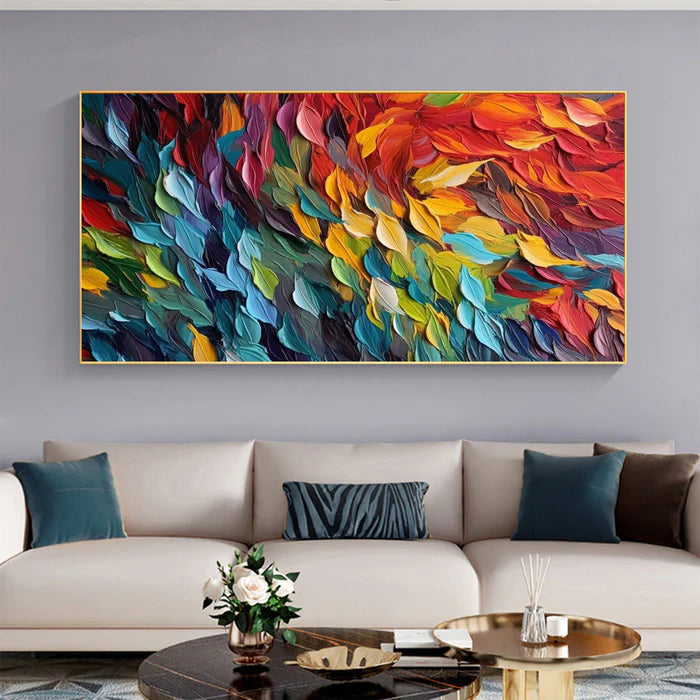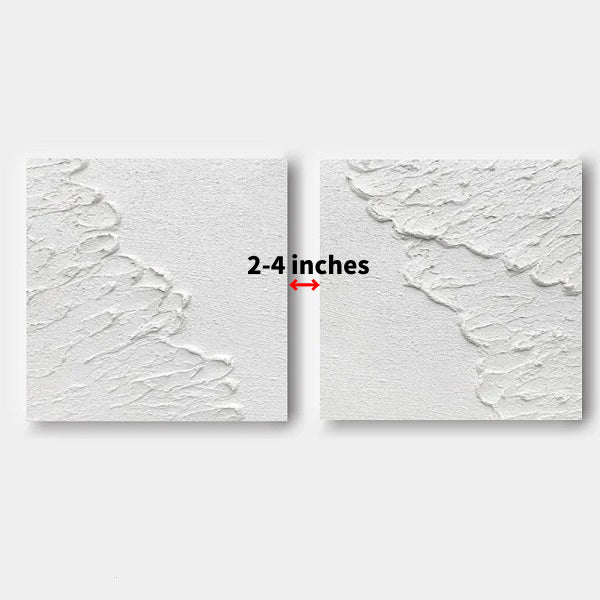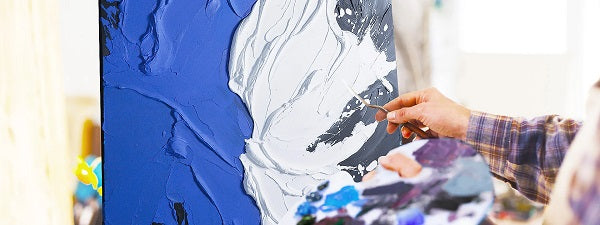Your Bedroom, Your Sanctuary - The Role of Art in Rest
Your bedroom should be more than just a place to sleep. It is your personal sanctuary, a space where you unwind, recharge, and find peace at the end of a long day. Every element in the room contributes to this atmosphere, and the art on your walls plays a leading role. So, what is the best wall art for a bedroom? The right piece can transform your room into a truly tranquil retreat, while the wrong one can be subtly disruptive. This guide will explore how to choose the perfect relaxing wall art to create the restful haven you deserve.

The Psychology of Calm: Choosing Relaxing Colors
Color has a profound effect on our mood and emotions. The psychology of color is a powerful tool when selecting art for a space dedicated to rest. Choosing a soothing color palette is the first step toward a more peaceful bedroom.
The Power of Soft Blues and Greens
Colors found in nature are inherently calming. Soft blues, reminiscent of the sky and sea, can lower blood pressure and create a sense of serenity. Muted greens, like sage or moss, connect us to the tranquility of the forest and promote feelings of balance.

Embracing a Neutral Textured Wall Art Palette
For a sophisticated and deeply restful space, you can't go wrong with neutrals. A neutral textured wall art piece in shades of warm beige, soft grey, or creamy white creates a gentle, uncluttered backdrop. The added texture provides depth and warmth, preventing the space from feeling stark. Our collection of is designed to create this exact feeling.
Colors to Avoid in a Restful Space
To promote rest, it's generally best to avoid overly stimulating colors in the bedroom. Bright, high-energy colors like vibrant red, orange, or electric yellow can be agitating and may interfere with your ability to unwind.
Serene Subjects: Art That Inspires Peace
The subject matter of your art also influences the room's energy. For a bedroom, you want to choose imagery and styles that are peaceful and calming to the eye. This is where serene wall art truly shines.
Abstract Art with Soft, Flowing Lines
Choose abstract art that features soft, organic shapes and flowing lines over sharp, jagged angles. This creates a sense of gentle movement and harmony, which is much more conducive to relaxation.
Minimalist Art: The Beauty of Simplicity
Minimalist art is an excellent choice for a bedroom. Its "less is more" approach helps to create a visually quiet and uncluttered environment. A simple composition allows the mind to rest rather than trying to process a lot of visual information.

Nature-Inspired Pieces: Landscapes and Botanicals
Bringing elements of the outdoors inside is a proven way to reduce stress. A piece of nature-inspired art, such as an abstract landscape that hints at a misty mountain or a calm sea, can instantly make a room feel more peaceful.
The Importance of Texture: Adding Warmth and Depth
A truly relaxing space engages more than just the eyes. Texture adds a tactile dimension that creates a feeling of coziness and comfort, making it a crucial element in bedroom decor.
How Texture Creates a Cozy, Tactile Feeling
A textured painting has a physical depth that feels warm and inviting. The sculptural quality of the paint makes the artwork feel more like a soft, comforting object, which is perfect for a space designed for rest. This is a key reason to choose .
A Wabi-Sabi Approach to Bedroom Art
The philosophy of Wabi-Sabi, which finds beauty in imperfection and natural materials, is perfectly suited for a bedroom. A piece of art with a rough, organic texture and an earthy palette embodies this philosophy, creating a space that feels authentic, grounded, and deeply calming.
Placement and Scale: Creating a Balanced Retreat
You've found the perfect piece of calm wall art; now, where should it go? Proper placement and scale are essential for creating a sense of balance and harmony in your retreat.
The Perfect Spot: Art Above the Bed
The wall above your bed is the natural focal point of the room. Hanging your main piece of art here creates a beautiful anchor for the entire space. As a general rule, the art should be about two-thirds the width of your headboard.

One Large Statement Piece vs. a Calming Diptych
What size art for above the bed? A single large statement piece can create a dramatic, luxurious feel. Alternatively, a diptych (a set of two matching artworks) can create a wonderful sense of symmetry and balance, which is very calming to the eye.
Keeping it Simple: Avoid Overcrowding the Walls
In a bedroom, visual clutter can lead to mental clutter. It's often better to have one or two thoughtfully chosen pieces of art than to cover every wall. Let your art have room to breathe.
Design Your Dreamy, Relaxing Retreat
Your bedroom is your personal haven. By choosing art with calming colors, serene subjects, and warm textures, you can transform it into the dreamy, relaxing retreat you've always wanted. The right art doesn't just decorate a room; it helps you rest, recharge, and wake up ready for a new day. What color palette makes you feel most relaxed?
Ready to create your tranquil retreat?
FAQ: Your Questions About Bedroom Wall Art
Should art in the bedroom be stimulating or calming? For the most restful environment, calm wall art is almost always the better choice. The bedroom is primarily for sleep and relaxation, so you want to avoid art that is too busy, loud, or emotionally charged.
Is it bad to have too much art in a bedroom? Generally, yes. Is it bad to have too much art? In a space meant for rest, an overcrowded wall can feel chaotic and distracting. It’s better to follow a "less is more" approach and choose one or two pieces that you truly love.
What is the best size art for above a king-size bed? For a standard king-size bed (around 76 inches wide), look for artwork that is approximately 45-50 inches wide. This follows the two-thirds rule and ensures the art looks proportional to the large bed.
Can I hang a painting directly opposite my bed?




